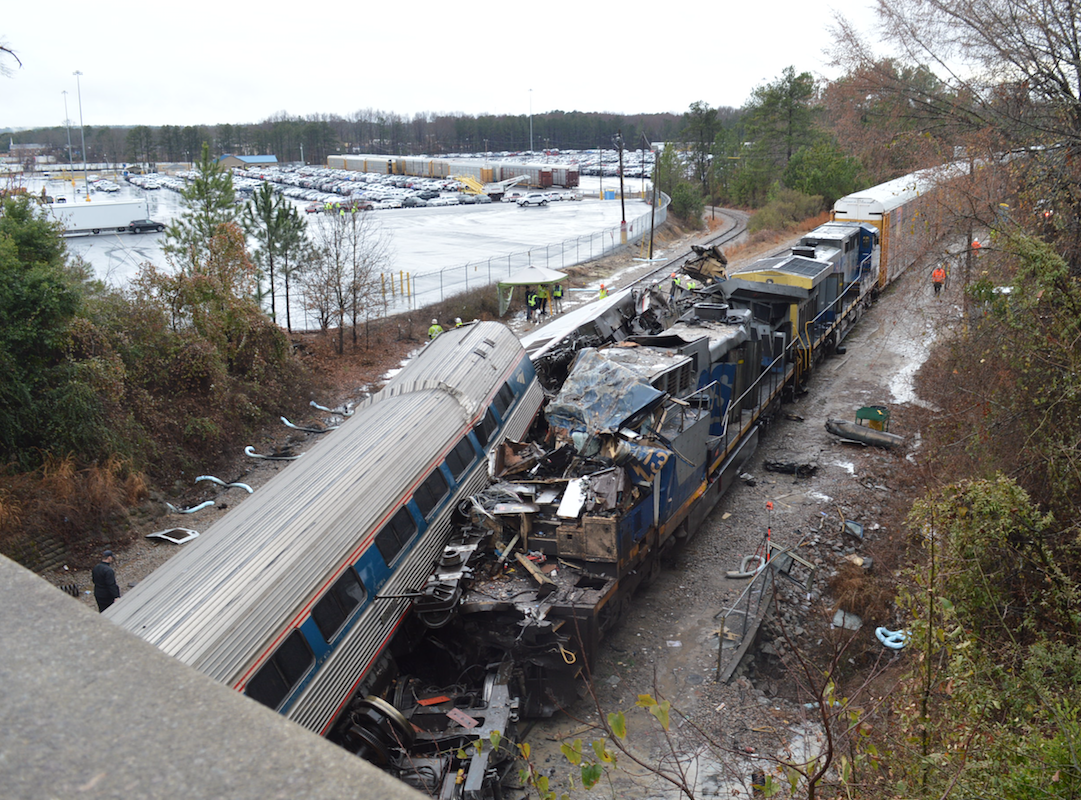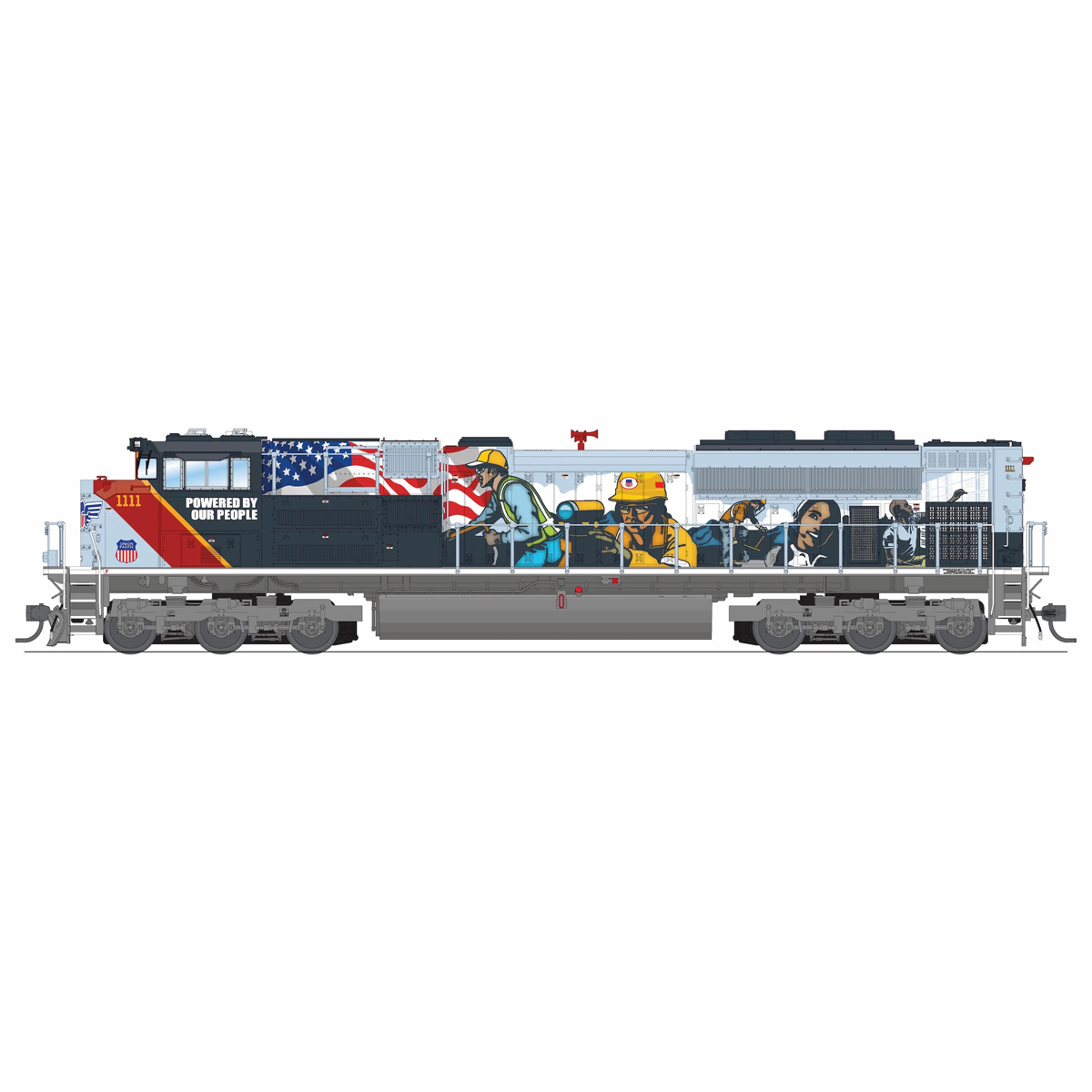Investigators focused on the failure of CSX to identify and mitigate the risk of operating trains under a signal suspension on a 23-mile segment of the railroad’s Columbia Subdivision. The conductor of local freight reported to the engineer that he had realigned a switch to the main track, and the engineer had informed the dispatcher that the switch was in the correct position.
It was not.
As a result, Amtrak Train 91 was diverted from the main track into the path of CSX local F777, hitting it head-on at more than 50 mph. The Amtrak engineer and conductor were killed, and 74 of the train’s passengers were injured.
“CSX failed to ensure that this crew was properly prepared to perform the tasks CSX assigned them to do that night,” said NTSB Chairman Robert Sumwalt, about what led up to the Feb. 4, 2018, crash.
Ironically, CSX had suspended the signal system to install positive train control, the system that’s intended to prevent the very kind of crash that took place in Cayce, a few miles south of Columbia.
The NTSB repeated its recommendation that the Federal Railroad Administration to issue an emergency order requiring railroads to operate trains at restricted speed approaching switches when a signal suspension is in effect. The FRA only advised railroads to do so late last year.
Amtrak decided to follow the NTSB’s guidance, with a “glaring lack of pushback” from its host carriers, noted Richard Hipskind, the lead investigator in the Cayce crash.
The NTSB also repeated its call for FRA to do more to prevent crashes caused by misaligned switches, such as requiring the installation of switch position indicators.
It was, as NTSB’s Jennifer Homendy pointed out, an improperly lined switch that led in part to the PTC requirement. That crash, in January 2005, in Graniteville, S.C., produced a toxic cloud of chlorine gas that killed a Norfolk Southern engineer and eight other people.
A deadly head-on collision between a Metrolink commuter train and a Union Pacific freight in Chatsworth, Calif., three years later finally pushed Congress to require PTC. The Metrolink engineer and 24 passengers were killed. Investigators found that the Metrolink engineer had been texting and ran past a stop signal.
As in Graniteville and Chatsworth, NTSB investigators found human error at the root of the Cayce crash.
“I believe that the conductor had every intention of following the rules and thought that he did,” testified Mike Hoepf, an expert on human performance. “He just made a mistake.”
Compounding that mistake: A lack of attention by CSX to the risk of putting a train crew in an unfamiliar situation and expecting them to perform at the same level.
Investigators found that CSX never conducted efficiency testing, or a skills assessment, on either the engineer or conductor of F777 for the purposes of ensuring proper switch alignment.
The NTSB also cast doubt on the effectiveness of using a Switch Position Awareness Form to mitigate the risk of an improperly lined switch. NTSB investigators reported they could not find the form used by the F777’s crew that day.
Since the Cayce crash and another fatal crash in December 2017 in DuPont, Wash., Amtrak has taken safety risk management into its own hands rather than relying on its host carriers, NTSB experts noted. Roughly 97 percent of Amtrak’s operations take place on other railroads’ tracks.
“They have made an awful lot of progress,” Hoepf said of Amtrak.
NTSB officials weren’t as complementary about federal regulators.
“It seems like they have been doing an awful lot of foot dragging,” NTSB Vice Chairman Bruce Landsberg said of the FRA.















So, the use of proper visible switch position indicators/signals etc. would have saved the industry from the waste of $1.5 BILLION on PTC? GPS has errors in it and doesn’t work very well in yards (Hoboken incident a few years ago) and other places with tracks close together or of difficult satellite contact (West Virginia in the mountains). Nowadays switches don’t have “stands” and other things showing position I’ve noticed. Last second panic attack? Canaan NH, 1949: the perils to unnecessarily changing a routine. As for the rail industry vs. the airlines for safety, I do remember the days of my youth (b. Jan. 1952) when air crashes were far more common than rail disasters–and my father flew a lot. (Yes, he was in the derailment of the Golden Triangle Warsaw IN 1947; on July 29th he turns 102!) Once a plane gets into the air unless it hits another plane it will keep on going until it runs out of fuel. Rail on the other hand has a risk every fraction of an inch but in an accident the risk of totally losing an entire train is much less; even in the Tay Bridge Disaster the loco got salvaged an reused–her crews called her “The Diver”.
I will say it again!
Cayce, SC = CSX milepost 362.
Dixiana, SC = CSX milepost 366.
The accident happened at Dixiana NOT Cayce. Dixiana is almost 5 miles south of Cayce and is about 10 miles south of Columbia, SC.
Yes, both the conductor and the CSX are at fault —
because the law imputes the negligence of the conductor, an employee,
to the CSX, the employer —
regardless of whether a court finds any negligence on the part of the CSX
in its selection, training, supervision, or management of the conductor.
Thus the doctrine of imputation attaches the personal responsibility —
and therefore the financial liability — from an employee to the employer.
That’s why an employer must pay for the misdeeds of its employees.
A conductor misaligns or fails to align a switch , and it ‘s CSX’s fault? While better training may help , at the end of the day someone made a major mistake.
If this train crew had been using selected airline-style Crew Resource Management (CRM) communication protocols, this accident would never have happened.
Back in the 1970s, there was a version of CRM safety procedures in effect on the old L&N’s K&A and Cumberland Valley Divisions. In “dark territory” those days, mine run crews often parked locomotives and trains on main track sidings at the end of a shift. Before heading for the motel in the crew van, I found an established procedure of asking the van driver to drive past the main track switches handled at our parking location. That put three, or even four, sets of eyes on switch positions.
If you want to see CRM procedures operating in an airline cockpit, go to pilotseye.tv. In addition to excellently shot and edited airplane operations videos, you will see Captains (CA) and First Officers (FOs) checking and rechecking all critical flight control activities. These communications also involve the Flight Attendants (FAs), though that is not as evident in the videos.
CRM results in US airlines turning in a nearly 10-year fatality free record. It was broken last year when SW Flight 1480 lost an engine and a passenger was killed. Since then, there have been no US domestic airline fatalities.
Sadly, the US railroad industry has a tough time going six months without an employe fatality.
In timetable and train order days, you ALWAYS returned a switch to its normal position. Some crews then stood on the opposite side of the main track during a meet to avoid a last-second panic error. I suspect the CSX 2-man crew had never operated in TT&TO territory.
I don’t understand why it was necessary to first remove the old signal system to install a new one with I-ETMS. Why couldn’t the old signals remain in service until the new ones were operational?